Whilst the famous mountainous country of Nepal is known for its soaring peaks, wild landscape and mountaineering expeditions, there’s actually far more to Nepal than many people realise.
The mountains are certainly what draws most tourists, and for good reason, but other cultural sites stand out in Nepal and make it not only a unique mountain country, but also a uniquely cultural place.
After much discussion, refection and rumination, we have put together this article that lists what we think are the best places to visit in Nepal, including both its wonderful landscape spots and its beautiful cultural sites.
Best Things To Do In Nepal
Hike to Everest Base Camp
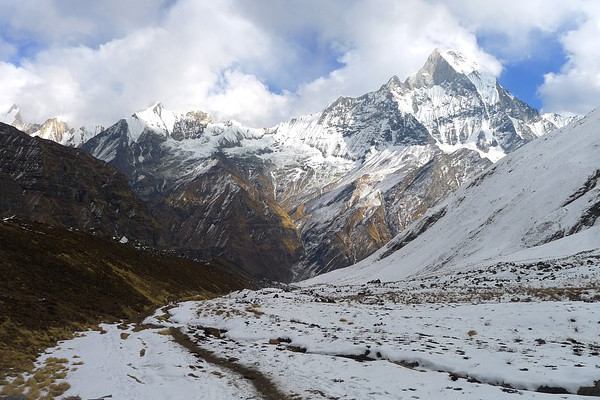
To stand at the base of the world’s highest mountain is to be inspired. It’s a feeling that not many experience and one of true awe and beauty. 30,000 trekkers a year make their way to Everest Base Camp, searching for the experience of a lifetime.
It certainly delivers.
Standing at just under 9,000 metres, the mountain instantly reminds you how small you really are and how big Mother Nature really is.
There are no roads in and, unless you plan to pay for a helicopter, you’ll need to trek.
The EBC trek is an experience in its own right and a great way to view some of the rugged wilderness of Nepal. If you get the chance to climb to the view point from Kala Patthar then do it – the views of Everest are incredible!
Visit Boudhanath Stupa in Kathmandu

Standing at the centre of Tibetan culture in Kathmandu, the Boudhanath is the largest stupa in Nepal and holiest Tibetan temple outside of Tibet.
The temple is located on the eastern outskirts of Kathmandu and was originally built in the 14th century. The building itself is spectacular as it looks like a giant Mandala from above (diagram of the Buddhist cosmos).
Today it remains a hugely important temple for Buddhists and is one of the most popular tourist attractions in the city. You’ll have to pay a charge to enter, but once you’re in it’s very peaceful.
Make sure to view the Mandala paintings on display!
Walk the streets of Bhaktapur
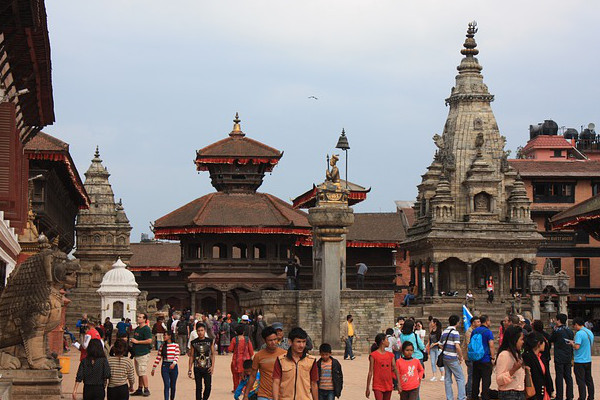
The charming medieval alleys of Bhaktapur will make you feel like you’ve hopped into a time machine! Located in the east corner of Kathmandu, the area is particularly famous for cultural works of the Newari people (the indigenous folk of the Kathmandu valley).
There is hardly any traffic in the area and the peaceful feeling is wonderful after wandering through the busy streets of Kathmandu. Look out for the lovely wood carvings dotted throughout the area!
Attend the Dashain Festival (late September-early October)

This is the biggest and most highly anticipated festival in Nepal each year. Celebrated by Nepalese people throughout the world, Dashain takes place for two weeks during the bright lunar fortnight from late September and early October.
The Dashain festival commemorates an important victory of the gods over the wicked demons and throughout Nepal the goddess Durga is worshiped in all her manifestations with countless pujas, abundant offerings and thousands of animal sacrifices for the ritual holy bathing – drenching the goddess for two weeks in blood.
In preparation for the festival, all Nepalese homes are cleansed and decorated, making this one of the most vibrant times to visit Nepal.
Hike in the Langtang Valley

Although not as famous and well known as the Everest Base Camp trek or the Annapurna Circuit, the Langtang valley hike is without doubt one of the most stunning hikes in Nepal.
The travel writer Bill Tillman called it one of the most “beautiful valleys in the world”. The valley trail follows the fast flowing Langtang River through superb mountain scenery.
The views throughout the trek are breath-taking and staying in local tea houses along the route gives you a great sense of authentic Nepalese culture and cuisine. You’ll need to allow anywhere from 6 days to 2 weeks or more for your trek.
Visit Lumbini – The birthplace of the Buddha
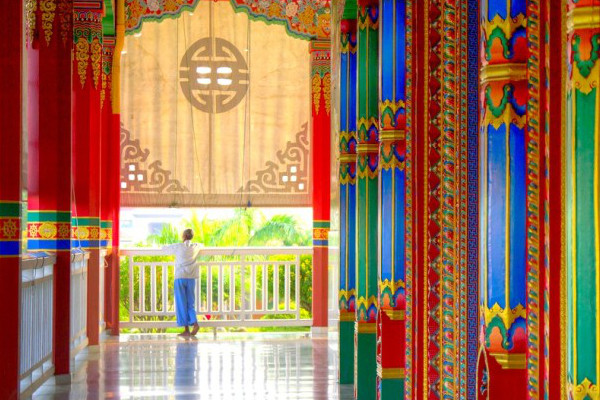
As the birthplace of Buddha, this is one of the most revered places for Buddhists. Every year sees tourists flocking to Lumbini in the Rupandehi District of Lumbini Province in Nepal.
However, once in Lumbini, the peaceful and quiet atmosphere is a testament to the reverence that is shown to the Buddha.
Although most people simply stop over quickly at c, to explore the area properly you would need to spend at least 2 days visiting the numerous temples to properly absorb the tranquillity of the spiritual site.
For photographers, look out for the colourful shrines as these make great backdrops for shots.
Visit Durbar Square Patan
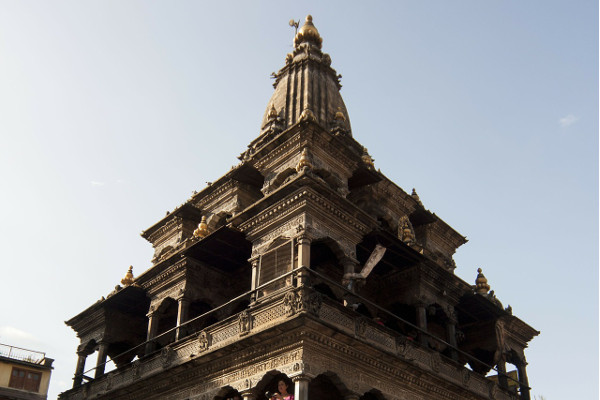
Just across the river from Kathmandu, Durbar Square Patan displays some of the finest temples in all of Nepal.
The ancient temple-saturated city is made up of a myriad of old brick lanes that lead to colourful and beautifully decorated squares and courtyards. The city is both spiritual and vibrant, making it one our favourite destinations.
The best place to witness the vibrant life of the city people is from rooftop cafes that are dotted around the central city. Try to visit in August if you can when the celebrations of Krishina are taking place.
The city bursts with vibrancy at this period when people flock to the city to see the holy rituals and traditional reenactments.
Hike to Gokyo Lakes
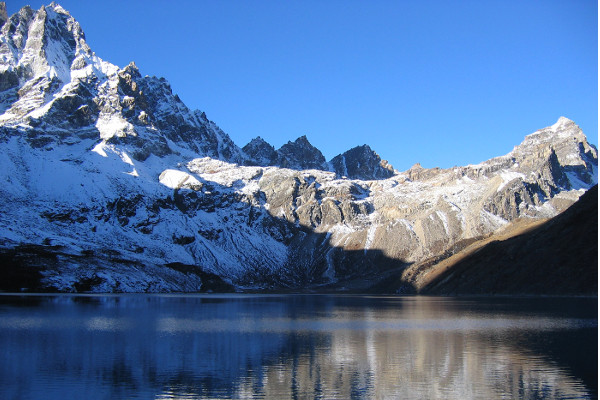
One of the prettiest and most dramatic landscapes in Nepal are the Gokyo Lakes. If you’re a keen trekker and have some time on your hands then you should definitely consider trekking to the Gokyo Lakes.
The trail is also a great way to see Everest as the return journey can join up with the classic Everest Base Camp trek. The Gokyo lakes are considered holy and you will trek past three before reaching the lake village of Gokyo.
One of the highlights is seeing the surrounding mountain peaks reflected perfectly in their shimmering blue shores. If you do trek the route, get your camera ready at the top of Gokyo Ri as you can see the peaks of Everest, Lhotse, Makalu and Cho Oyo!
Go on safari in Chitwan National Park
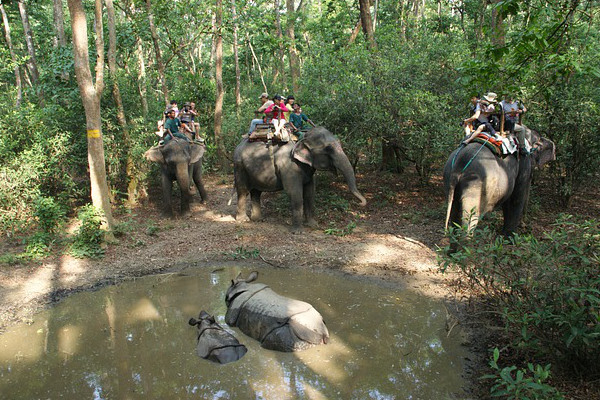
Meaning ‘Heart of the jungle’, the Chitwan National Park is the ticket for wildlife enthusiasts visiting Nepal!
Tucked away in dense marshland jungle, you’ll have the chance to see a diverse range of wildlife, including crocodiles, monkeys, rhino, deer and a huge array of bird life! If you’re super lucky there’s the chance to see tigers, leopards and sloths, however, these are exceptionally difficult to spot.
The park is generally very hot and muggy which comes as a welcome relief to some who think Nepal is simply freezing mountainous terrain.
If you’re a keen wildlife photographer then you should consider seeing the park on the back of an elephant as the park’s wildlife do not see these giant creatures as a threat.
Visit Pokhara City
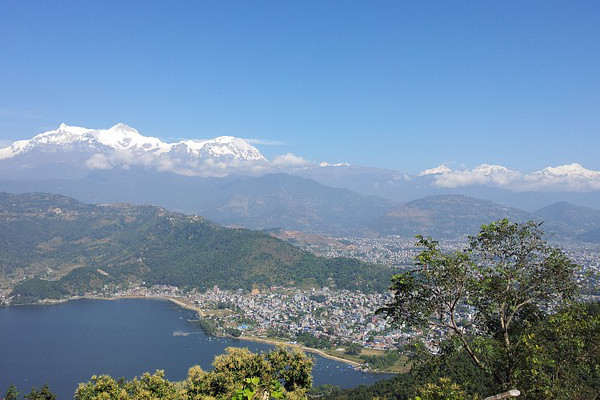
Well known to trekkers, Pokhara is a little gem that seems to keep drawing you back to its streets. It’s certainly a city that should be on your visit list and will probably rank as one of your favourite cities in the world – it certainly does for us!
Sitting on the shores of a picturesque lake, the charming city boasts a phenomenal amount of activities for tourists to enjoy. These include paragliding, fishing, trekking and mountain biking.
Cafes line the lake shore and you can have a great day simply relaxing in one of them, maybe take a boat out for a few hours. A good little tip is to drive up into the mountains to the village of Sarangkot.
This is a lovely and authentic Nepalese village where the village people are very welcoming.
Hike in the Annapurnas
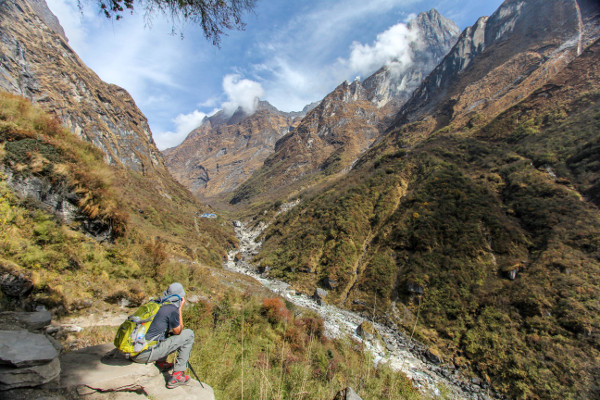
Any trekker worth his salt will want to hike in the Annapurnas, in particular, the Annapurna Circuit.
Often considered one of the greatest treks in the world, the popular trail winds its way through a number of climatic zones, including dense forests, rocky cliffs, rice fields and semi-arid terrain.
Every corner of the trail reveals tantalising glimpses of mountain peaks soon to be discovered and the views from the highest locations are no less than stunning.
At the highest point – Thorung La Pass (5,416 meters), you can see three 8,000 metre peaks! The trek usually takes between 14 and 20 days depending on your speed and itinerary.
Souvenir shop in the Thamel District of Kathmandu
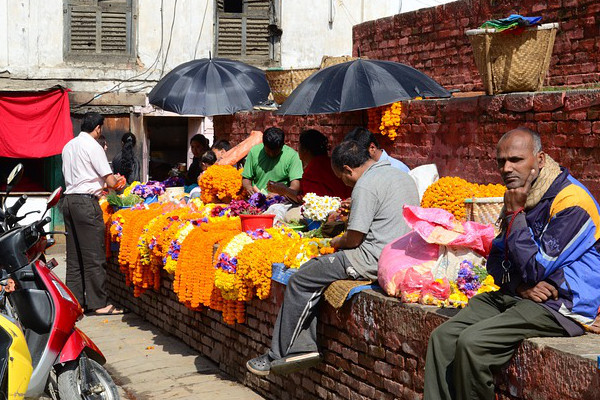
Thamel is the centre of the tourist district in Kathmandu and is a hub of activity and shops. Discovered by hippies in the 1970s, the area is now quite commercialised, but no less vibrant!
Littered with shops, cafes and hotels, you’ll find everything you need here. You can buy everything from Kukri swords to Tibetan singing bowls.
Make sure you haggle the price as the initial price will be way above what you can get with a little negotiation. Also, beware of unscrupulous dealers who roam the district.
Visit Swayambhunath Temple

Located in Kathmandu Valley, west of Kathmandu city, the Swayambhunath Temple is a world heritage site and Buddhist temple. The temple provides a fantastic mix of Buddhist and Hindu iconography and is still used today.
Swayambhunath Temple is probably the most sacred site for Nepalese Buddhists and second only to Boudhanath for Tibetan Buddhists.
The complex is made up of many temples and shrines and the site has a lot of stairs, so if you struggle with stairs you may want to sit this site out.
Be warned there are numerous monkeys in and around the temple and they will often try to steal your snacks!
Hike to the Muktinath Temple
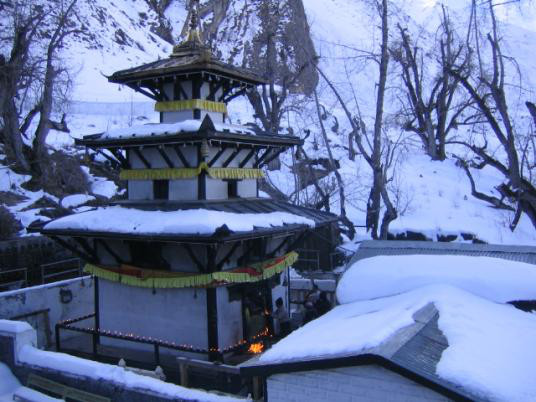
A sacred site for both Hindus and Buddhists alike, the Muktinath Temple is located in the Muktinath Valley 3,710 metres above sea level.
The main shrine to Vishnu is centred around a series of ponds and over a 100 taps! The temple is an important pilgrimage site and many thousands of pilgrims visit the site every year to bathe in the pools – even in the dead of winter!
By bathing in the pools you are considered to be washing away your sins. If you want an authentic experience try and visit the temple early in the morning when the pilgrims arrive.
The best way to reach the Muktinath temple is to hike there. See the Jomsom Muktinath hike.
Visit Changu Narayan
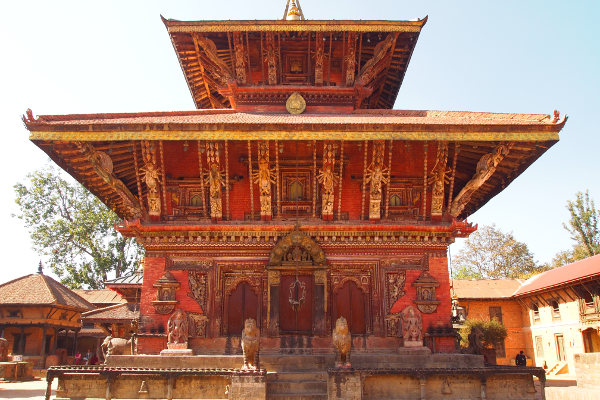
This ancient Hindu temple is certainly worth visiting. Located on a high hill top that is known as Changu or Dolagiri, the temple offers incredible views across the Kathmandu Valley.
The shrine is dedicated to Lord Vishnu and held in special reverence by Hindus.
According to legend, Changu Narayman temple existed as early as 325 AD and is considered to be the oldest temple in all of Nepal!
The whole temple is considered a work of art and the interior is richly decorated. The atmosphere is incredibly relaxing and, if you have the time, there are some lovely trails around the temple to explore.
Attend Tihar Festival (late October-early November)
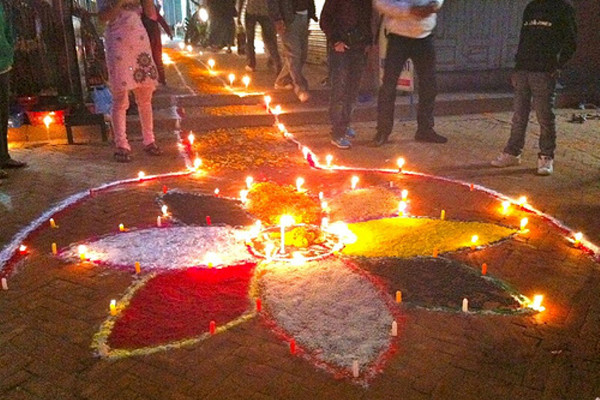
Tihar, also known as the ‘Festival of light’ takes place over 5 days from late October to Early November.
The festival worships Laxmi, the goddess of wealth and all Nepalese houses are cleansed and decorated with lights, candles and oil lamps. Crows, dogs and cows are worshipped throughout the festival and people wear vermillion coloured garlands to celebrate.
The brightly lit scenes at night are spectacular and this is a sensational festival to witness if you’re in Nepal at the right time.
FAQ
If you have any further questions about this article then please just leave us a note below and we’ll get back to you within 24 hours!
References: Welcome Nepal
More Nepal articles:
